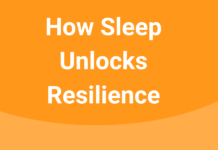
The scenario is all too familiar. It's Monday morning- the weekend a memory already. The alarm clock jolts you into the work week reality of schedules, to-do lists, and meeting planners. Coffee in hand you brave the traffic mentally creating your “must-do” list and reviewing the day's agenda. Noticing you are triple booked many times throughout the day in meetings, you triage the importance of being 20 minutes late for one meeting in order to be present for 20 minutes of another.
In between your appointments you furiously check your email, trying to keep from drowning in the sea of communication. Bathroom breaks (if you take one) become an opportunity to delete, answer, and flag a few emails. Fast forward to lunch when, in between “mandatory” meetings you try to complete item one on your must-do list, only to be interrupted by a phone call, text or door knock with the latest emergent need that requires your immediate attention. Before you know it 6 pm is upon you. As you make your way through bumper to bumper traffic to make the last 30 minutes of your child's soccer game you realize, in a panic, your to-do list was barely touched. When in the world will you find the time to get the work done? Spending your day fighting fires and in meetings, in which, the action items require time and attention, you find yourself burning the midnight oil in order to find uninterrupted time to work on the actual work to move your team closer to its goals.
A few months ago I pulled my team of managers together to discover and discuss how to be more productive and create the time in our day to work more effectively, more strategically, and carve out time within our schedule to focus on the work that matters most. With the help of a performance excellence expert trained in Lean Strategic Thinking, we convened for a two-day extensive examination as to what we were actually spending our time doing during the day. In order to prepare for the work, we all kept daily logs for two weeks (another thing to do!) in which we logged our time 7 days a week, if applicable, to the minute. It was an exercise in commitment we determined, as it caused immediate focus to how our time was spent and self-reflection on both time management and work-life balance.
Our findings were tabulated and reviewed. Shockingly (but not that surprising) we were spending several hours a day on email. Although important for communication, we identified many areas of waste. For instance, we noticed that we were copied on (or copied our leader) on as much as 30 – 40 % of our daily correspondence. Talk about communication overload! We decided as a team what constituted “cc” and developed a commitment to each other to think before copying and only escalate as necessary. We could communicate in person any updates we felt the leader would need to be aware. The other shocking realization was that we were, as a team, spending anywhere from 40% to 67% (me) of our day in meetings. We listed out each and every meeting that each of us attended, the purpose, the role we played in the group, and which of us duplicated this effort. It was very apparent that many of us were attending meetings that we were not really sure of the purpose of our attendance and were able to “deselect” many in order to have more time in our day to spend on value added work. We defined “value added” as time spent mentoring and coaching our direct reports, time spent observing where the work was occurring and barriers to completion, needs to increase productivity or satisfaction, time spent building relationships with our interdisciplinary partners to foster communication and goal alignment, and the time actually doing the work to move us closer to our goals.
As we talked through and identified “value added” time, it was apparent to my team that this was also the time where they felt the most job satisfaction and purpose. In their current state of working it was the least amount of time they spent “working”. Research on job satisfaction and employee engagement points to the fact that specific management practices, such as, spending time with employees and understanding concerns, barriers, developmental goals, strengths, and skills, generates increased employee satisfaction and may increase business-unit outcomes, including profit. How then to put more of this time into our workday? Our Lean Management expert guided us to develop daily leader “standard work” where we would allocate a specific amount of hours per day (or per week) to each of the areas we had identified as value added. Conceptualizing the “how” was difficult. How would we determine the hours of our day when we were at the mercy of so many others demanding our time? This paradigm shift was arguably foreign to how we had been practicing.
We began by experimenting with our calendars and “blocking off” time, for each of the value-added categories. I found this exercise incredibly useful as I color coded each of the categories on my calendar to correspond to the number of hours I would spend daily (or weekly) on each activity. For example, I had committed to spending two hours a day coaching, mentoring, and teaching my direct reports. That meant I would block off two (1 hour ) blocks of my daily calendar to either proactively plan to meet with direct reports or to have the time to meet with them when occurrences dictated my support. I colored these hours green (for growing people). I reviewed every request on my calendar. If it didn't fit within the allocated “value added” time blocks – I considered the importance of my time and decided whether or not to accept. I also included three 30 minute slots of my day for email: 7:30, 11:30, and 4:30 pm. Learning to spend 30 minutes at a time working through the volume of email was much more efficient than trying to one-off emails every few minutes of my day. I also developed a “cc” folder and set up outlook rules to send any email that I was copied on (unless it came from my boss, my bosses – boss or our leader) into a folder that I would check once a day. Slowly, but surely, a pattern of work emerged and along with it… a funny thing happened. Most of my calendar was now segregated and “blocked” to support the standard work I had identified (along with my boss) as most important. When an ask occurred for my time, I was able to categorize it into one of the value-added themes and slide it into the blocked off time or politely decline. I now had requests in which other colleagues would send me an email to say “I am having a hard time finding time on your calendar to discuss XYZ, when is the best time for you?” I was able to either find out more information as to why they were requesting time or slide them into a slot that fit my daily work. I was now in control of my whirlwind.
Harvard Business Review reviewed this very topic in “Make Time for the Work That Matters” and concluded that “knowledge workers can make themselves more productive by thinking consciously about how they spend their time; deciding which tasks matter most to them and their organizations, and dropping or creatively outsourcing the rest.” HBR identified what myself and my team did in this reflective exercise; by not committing ourselves in the first place we were free to plan value-added work that was more meaningful, moved us closer to our goals and overall gave us more control of our workday.
Monday morning still finds me too early after a relaxing weekend but I have now decreased the daily whirlwind to an occasional stiff breeze or two. As with all self-improvement projects, I am constantly learning, adjusting, evaluating, and improving. Most importantly, my team and I hold each other accountable to what we know to be the best use of our time. This mutual respect, support, and collaboration have led to each of us to find more balance and teach those we are growing what we have learned along the way. The Whirlwind will never go away…it is how we react to its demands that will truly change our ability to get the work done.





